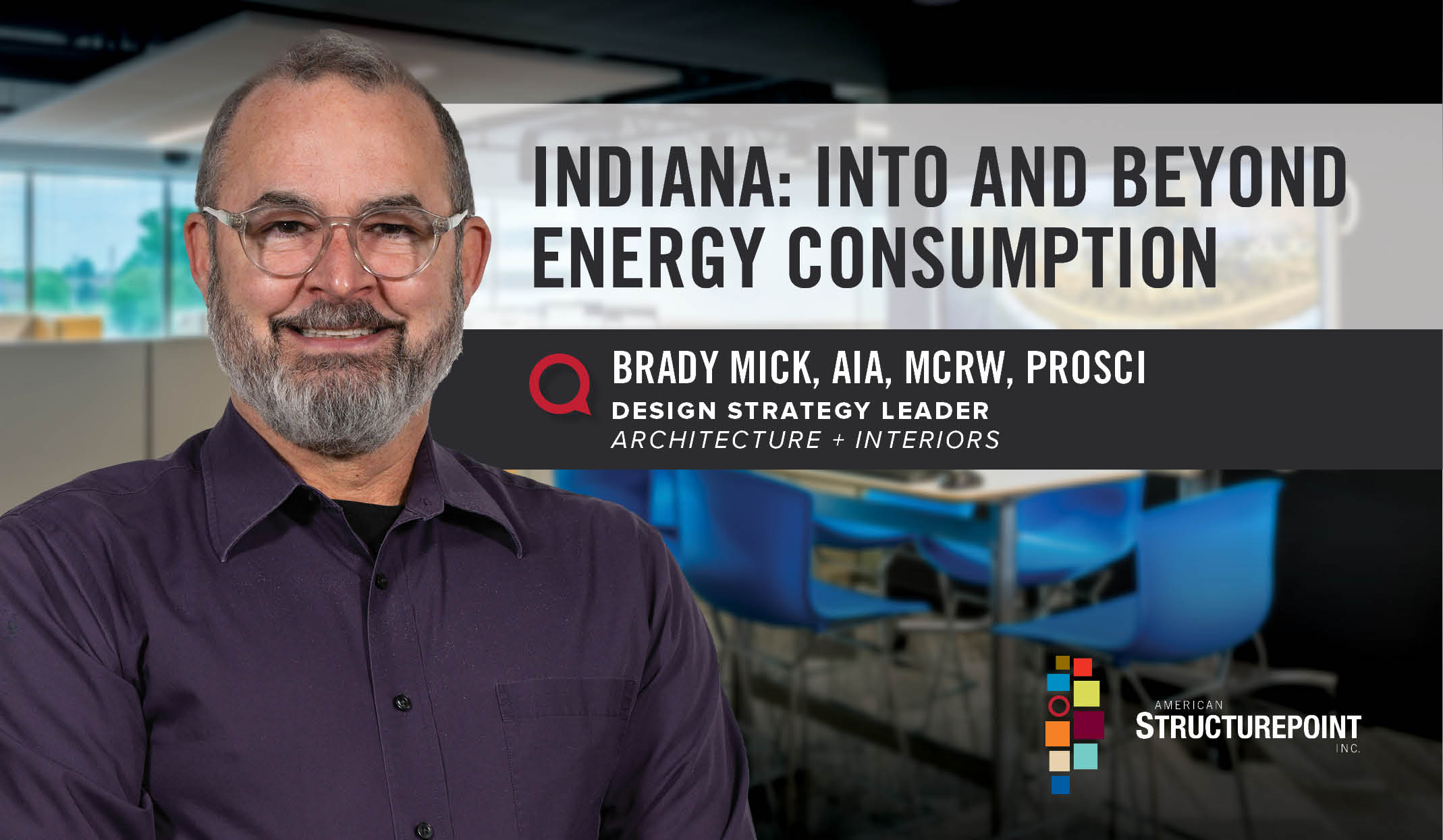Indiana: Into and Beyond Energy Consumption
 Corporate, Architecture + InteriorsFeb 17, 2025
Corporate, Architecture + InteriorsFeb 17, 2025Prepared by Brady Mick, Strategic Design Leader, American Structurepoint
Traditionally, sustainable practices emphasize reducing energy consumption as the primary measure of value. However, this perspective represents only half of the equation shaping the future of energy’s worth. Imagine instead that each unit of energy consumption is evaluated not just by what is saved, but by the value it generates—enhancing work, learning, and living experiences for those who use it. This perspective reveals the untapped potential within energy, unlocked through the power of design to create high-performance places that maximize benefits for people.
Indiana stands at a transformative moment in its energy evolution. Rapid growth in sectors like artificial intelligence (AI) data centers, semiconductor manufacturing, and hydrogen production is projected to double the state’s energy needs in the coming years. At the Future of Energy Summit 2024, Indiana’s business and political leaders outlined strategies for diversifying energy sources and streamlining regulations to meet these demands. While these discussions prioritized energy as a consumable utility, they overlooked the potential of design thinking to engage people as contributors to productive energy outcomes.
This article draws insights from the summit, where utility executives, economic development leaders, technological innovators, and policymakers addressed Indiana’s energy challenges and opportunities. While their strategies focused on increasing energy capacity and ensuring reliability, the role of design in maximizing the return on energy expenditure was notably absent. All energy expenditure is not equal. To maximize its return, energy must be used to power productive places that enhance human potential, including where we work, learn, live, and play.
Design thinking offers a transformative framework for this approach. Thoughtfully designed places elevate energy from a transactional utility to a catalyst for human productivity and thriving communities. For example, workplaces designed to foster collaboration and wellness amplify human engagement, increasing both productivity and well-being. Similarly, urban and rural environments that integrate renewable energy with engaging public spaces create vibrant, resilient communities, returning higher value results for the energy consumed. By investing in the design of beautiful, functional, and meaningful places, Indiana can optimize energy supplied from the grid, ensuring it powers not just systems but human flourishing. The alternative—uninspiring, poorly designed spaces—consumes the same energy but fails to achieve its full potential in enabling people to thrive.
This reorientation toward design-driven energy planning reframes energy as more than a commodity. It becomes a catalyst for human experience and productivity. Alongside infrastructure investments, Indiana can lead design of place with a holistic, human-centered approach, positioning energy use as a responsible force for societal growth and human innovation. American Structurepoint’s Architecture + Interiors Team is dedicated to designing places that unlock Indiana’s human potential, reimagining energy as a tool for the betterment of communities and ecosystems alike.


